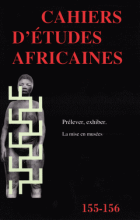Resource information
The dynamics of land occupation in Conakry is approached from the angle of both the colonial authorities and the local dwellers. The former took upon themselves the power of allocating plots and strove to enforce a colonial urban pattern. The latter succeeded in partly appropriating the town in spite of the minutiae of the law. As the urban area extended, Conakry was divided into three zones according to an ordinance of 1905. Although the third zone was officially termed 'native', there were no ethnic or national criteria. The zoning rules were based upon building standards (technique and material) and the status of occupancy (precarious or definitive deed). Thus the usual colonial discourse, with its frequently racialist connotations--separation of ways of life, obsession about diseases...--did in fact conceal a reality with a more social basis, since residential prohibitions were never individual.

